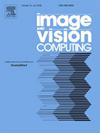MaxSwap-Enhanced Knowledge Consistency Learning for long-tailed recognition
IF 4.2
3区 计算机科学
Q2 COMPUTER SCIENCE, ARTIFICIAL INTELLIGENCE
引用次数: 0
Abstract
Deep learning has made significant progress in image classification. However, real-world datasets often exhibit a long-tailed distribution, where a few head classes dominate while many tail classes have very few samples. This imbalance leads to poor performance on tail classes. To address this issue, we propose MaxSwap-Enhanced Knowledge Consistency Learning which includes two core components: Knowledge Consistency Learning and MaxSwap for Confusion Suppression. Knowledge Consistency Learning leverages the outputs from different augmented views as soft labels to capture inter-class similarities and introduces a consistency constraint to enforce output consistency across different perturbations, which enables tail classes to effectively learn from head classes with similar features. To alleviate the bias towards head classes, we further propose a MaxSwap for Confusion Suppression to adaptively adjust the soft labels when the model makes incorrect predictions which mitigates overconfidence in incorrect predictions. Experimental results demonstrate that our method achieves significant improvements on long-tailed datasets such as CIFAR10-LT, CIFAR100-LT, ImageNet-LT, and Places-LT, which validates the effectiveness of our approach.
基于maxswap的长尾识别增强知识一致性学习
深度学习在图像分类方面取得了重大进展。然而,现实世界的数据集通常表现为长尾分布,其中少数头类占主导地位,而许多尾类的样本很少。这种不平衡导致尾类的性能不佳。为了解决这个问题,我们提出了MaxSwap- enhanced Knowledge Consistency Learning,它包括两个核心组件:Knowledge Consistency Learning和MaxSwap for Confusion Suppression。知识一致性学习利用来自不同增强视图的输出作为软标签来捕获类间的相似性,并引入一致性约束来强制跨不同扰动的输出一致性,这使得尾类能够有效地从具有相似特征的头类中学习。为了减轻对头部类的偏见,我们进一步提出了用于混淆抑制的MaxSwap,以便在模型做出错误预测时自适应调整软标签,从而减轻对错误预测的过度自信。实验结果表明,我们的方法在CIFAR10-LT、CIFAR100-LT、ImageNet-LT和Places-LT等长尾数据集上取得了显著的改进,验证了我们方法的有效性。
本文章由计算机程序翻译,如有差异,请以英文原文为准。
求助全文
约1分钟内获得全文
求助全文
来源期刊

Image and Vision Computing
工程技术-工程:电子与电气
CiteScore
8.50
自引率
8.50%
发文量
143
审稿时长
7.8 months
期刊介绍:
Image and Vision Computing has as a primary aim the provision of an effective medium of interchange for the results of high quality theoretical and applied research fundamental to all aspects of image interpretation and computer vision. The journal publishes work that proposes new image interpretation and computer vision methodology or addresses the application of such methods to real world scenes. It seeks to strengthen a deeper understanding in the discipline by encouraging the quantitative comparison and performance evaluation of the proposed methodology. The coverage includes: image interpretation, scene modelling, object recognition and tracking, shape analysis, monitoring and surveillance, active vision and robotic systems, SLAM, biologically-inspired computer vision, motion analysis, stereo vision, document image understanding, character and handwritten text recognition, face and gesture recognition, biometrics, vision-based human-computer interaction, human activity and behavior understanding, data fusion from multiple sensor inputs, image databases.
 求助内容:
求助内容: 应助结果提醒方式:
应助结果提醒方式:


